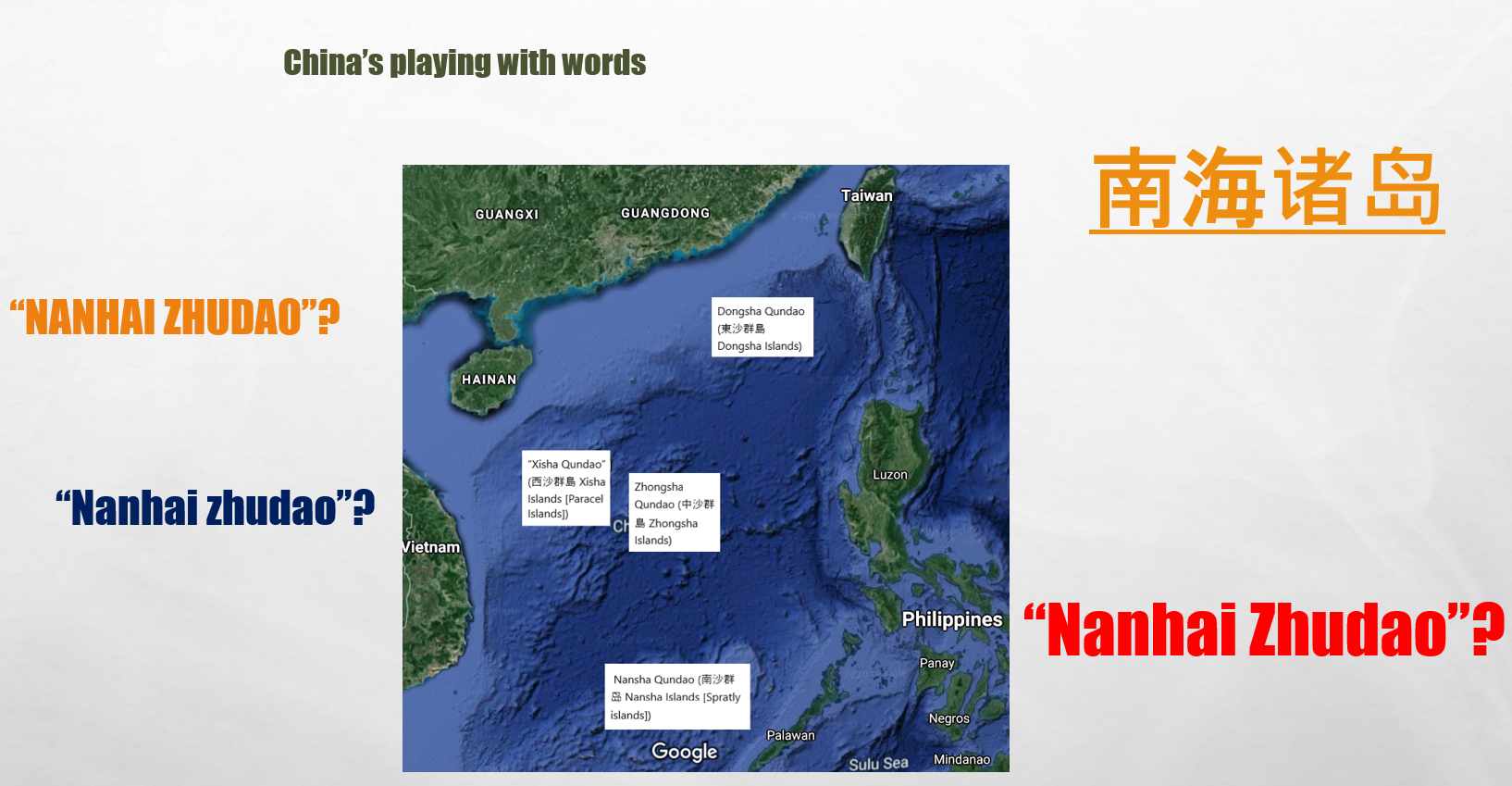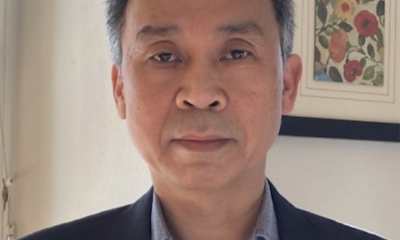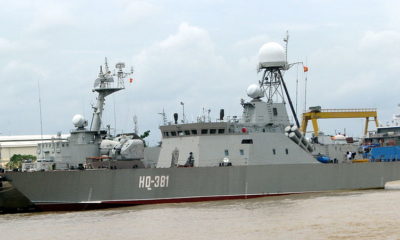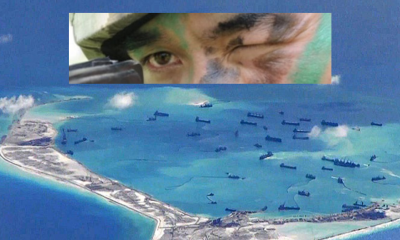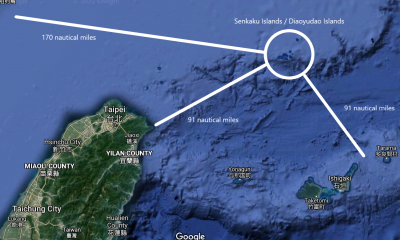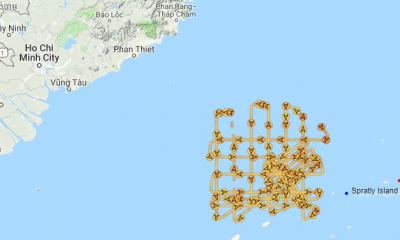Nguyen Luong Hai Khoi
China’s Recent Invention of “Nanhai Zhudao” in the South China Sea (Part 1: The birth of “Nanhai Zhudao”, Part 2: Examining the “Nanhai Zhudao” legal basis)
On December 12, 2019, after Malaysia made the new Submission for the extended continental shelf, China sent a note to protest Malaysia. On this note, China announced a new concept, “Nanhai Zhudao,” that surprised many officials and scholars interested in the South China Sea dispute.
“China has sovereignty over Nanhai Zhudao, consisting of Dongsha Qundao, Xisha Qundao, Zhongsha Qundao and Nansha Qundao; China has internal waters, territorial sea and contiguous zone, based on Nanhai Zhudao; China has exclusive economic zone and continental shelf, based on Nanhai Zhudao; China has historic rights in the South China Sea.”
The concept of “Nanhai Zhudao” is another version of China’s “Four Sha” concept first used in 2017. China introduced both concepts after the legal basis of Chinese U-shaped lines in South China was rejected by the Permanent Court of Arbitration in 2016. This essay analyzes the meaning of the concept “Nanhai Zhudao” and “Four Sha” to reveal the Chinese legal tactic by inventing new terms with no historical and legal relevance.
China’s discourse strategies in the war of diplomatic notes
“Nanhai Zhudao” was first used in 2016. Specifically, on July 12, 2016, when the Permanent Court of Arbitration (PCA) ruled on the Philippine lawsuit against China and denied the legal basis of U – shaped lines in the South China Sea, on the same day China’s Ministry of Foreign Affairs responded by stating the concept of “Nanhai Zhudao” in “Statement of the Government of the People’s Republic of China on China’s Territorial Sovereignty and Maritime Rights and Interests in the South China Sea” as an alternative legal ground to claim the whole of the South China Sea.
“China’s Nanhai Zhudao (the South China Sea Islands) consist of Dongsha Qundao (the Dongsha Islands), Xisha Qundao (the Xisha Islands), Zhongsha Qundao (the Zhongsha Islands) and Nansha Qundao (the Nansha Islands). The activities of the Chinese people in the South China Sea date back to over 2,000 years ago.”
On the next day, July 13, 2016, the Chinese Ministry of Foreign Affairs, published a complete report, “China Adheres to the Position of Settling Through Negotiation the Relevant Disputes Between China and the Philippines in the South China Sea,” claiming sovereignty over the entire South China Sea based on the concept of “Nanhai Zhudao.”
“Nanhai Zhudao” or “the South China Sea Islands,” as China explained, is the other name of “Four Sha” 四沙 (“Sha” 沙 in this context meaning “sand”) that China sometimes stated earlier. Indeed, in 2017, the US senior officials paid attention to a new Chinese tactic for the South China Sea’s claim, the so-called “Four Sha.”[1]
Ma, the Foreign Ministry official, announced during the meetings in Boston on Aug. 28 and 29 that China is asserting sovereignty over the Four Sha through several legal claims. He stated the area is China’s historical territorial waters and also part of China’s 200-mile Exclusive Economic Zone that defines adjacent zones as sovereign territory. Beijing also claims ownership by asserting the Four Sha are part of China’s extended continental shelf.
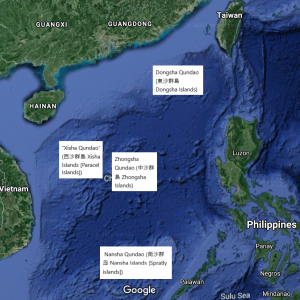
Figure 1: The positions of “Four Sha” or “Nanhai Zhudao” consisting of Dongsha Qundao (東沙群島 the Dongsha Islands), “Xisha Qundao” (西沙群島 Xisha Islands), Zhongsha Qundao (中沙群島 the Zhongsha Islands), and Nansha Qundao (南沙群岛 Nansha Island)
Dongsha Qundao (東沙群島 the Dongsha Islands [English: Pratas Island]) is located in the northern part of the South China Sea. It is about 170 nautical miles northeast of Hong Kong and administered by Taiwan.
Zhongsha Qundao (中沙群島 the Zhongsha Islands) is located at 15 ° 45’N, 114 ° 31’E, 16 ° 0’N, 114 ° 30’E (in the green circle position). The Scarborough Shoal is located on 15 ° 11′N 117 ° 46′E (in red circle position) on the 200 nautical miles of the continental shelf of the Philippines. Zhongsha Qundao and Scarborough Shoal are more than 160 nautical miles apart in the South China Sea, but in the diplomatic note sent to Malaysia and the Philippines, China describes Scarborough Shoal as belonging to Zhongsha Qundao.
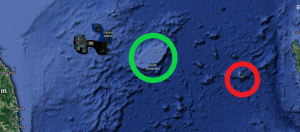
Figure 2: Location of Zhongsha Qundao (中沙群島) [green circle position] and the Scarborough Shoal [red circle position]
“Xisha Qundao” (西沙群島 Xisha Islands, [English: Paracel Islands, Vietnamese: Hoang Sa]) are the subjects of sovereignty disputes among Vietnam, China, and Taiwan. Nansha Qundao (南沙群岛 Nansha Islands, [English: Spratly islands, Vietnamese: Trường Sa]) has been claimed entirely by Vietnam, China, and Taiwan, partly by Malaysia, Brunei, Philippines.
Combining geographic features in the South China Sea into a group is China’s new tactic. Although the phrase “Nanhai zhu dao” 南海诸岛 appears to be common in Chinese texts, Chinese government legal documents before 2016 did not group the islands in the South China Sea as a single unit.
In the 1958 Declaration on the territorial sea’s width, China listed many islands and represented them as individual islands but has not yet grouped them.
中华人民共和国的领海宽度为十二海里。这项规定适用于中华人民共和国的一切领土,包括中国大陆及其沿海岛屿,和同大陆及其沿海岛屿隔有公海的台湾及其周围各岛、澎湖列岛、东沙群岛、西沙群岛、中沙群岛、南沙群岛以及其他属于中国的岛屿。(Chinese origin: 中华人民共和国全国人民代表大会常务委员会关于批准中华人民共和国政府关于领海声明的决议(1958年9月4日全国人民代表大会常务委员会第一百次会议通过))
English translation:
The breadth of the territorial sea of the People’s Republic of China shall be twelve nautical miles. This provision applies to all territories of the People’s Republic of China, including the Chinese mainland and its coastal islands, as well as Taiwan and its surrounding islands, the Penghu Islands, the Tungsha Islands, the Hsisha Islands, the Chungsha Islands, the Nanshal Islands and all other islands belonging to China which are separated from the mainland and its coastal islands by the high seas.[2]
Here, the Dongsha Islands, the Paracel Islands, the Zhongsha Islands, Nansha Islands are just four of the many islands that China claims sovereignty. China did not refer to them as “Nanhai Zhudao” (南海諸島, group of islands in the South China Sea) as a unified group but called them “gé dao” (各 島 “each island”) as separate islands.
In 1992, on the “Law of the People’s Republic of China on the Territorial Sea and the Contiguous Zone” (中华人民共和国领海及毗连区法), China continued to repeat the similar expression of those islands in 1958. That is to say, until 1992, each island on the South China Sea was still designated by China as separate islands.
中华人民共和国的陆地领土包括中华人民共和国大陆及其沿海岛屿、台湾及其包括钓鱼岛在内的附属各岛、澎湖列岛、东沙群岛、西沙群岛、中沙群岛、南沙群岛以及其他一切属于中华人民共和国的岛屿。
English translation: “The PRC’s territorial land includes the mainland and its offshore islands, Taiwan and the various affiliated islands including Diaoyu Island, Penghu Islands, Dongsha Islands, Xisha Islands, Nansha (Spratly) Islands and other islands that belong to the People’s Republic of China.” (Article 2)
In 1958 and 1992, China only mentioned the islands, including four in the South China Sea but did not determine their scope or baseline to determine their territorial width.
In June 2012, the Chinese government established the Sansha city (三沙市 Sansha shi) to manage “three sand” (“Xisha” 西沙 [Paracel]), Zhongsha 中沙, and Nansha 南沙 [Spratly]). This time, those three islands were still understood as three separate ones, not belonging to the same group. The concept of “Nanhai Zhudao” did not appear here. Sansha City also manages only “three Sha,” not “Four Sha.” Namely, the concept of “Four Sha” (four sand) did not exist yet. The specific boundary of the water area managed by Sansha City was also not clearly defined, but China referred to it as the water area within the U-shaped lines.
In 2014, in the “Position Paper of the Government of the People’s Republic of China on the Matter of Jurisdiction in the South China Sea Arbitration Initiated by the Republic of the Philippines” (December 7, 2014), China still listed those islands as individual geographic features:
“China has indisputable sovereignty over the South China Sea Islands (the Dongsha Islands, the Xisha Islands, the Zhongsha Islands and the Nansha Islands) and the adjacent waters.” (II.4)
In July 2016, shortly after the Permanent Court of Arbitration ruled against the U-shaped lines’ legal grounds, China officially announced the concept “Nanhai Zhudao.” The idea of consolidating those geographic features in the South China Sea into a single unit was a new invention that evolved from treating them as separate islands to placing three of them under the administrative control of a city (Sansha City) and finally describing them as a single group of islands.
Likewise, in 2012, when China occupied Scarborough Shoal (黄岩岛 “Huangyan dao” in Chinese), the Chinese Ministry of Foreign Affairs, in its Q&A on Scarborough (外交部:中方从未承诺从黄岩岛海域撤船 [Ministry of Foreign Affairs: China has never promised to withdraw ships from the waters of Huangyan Island]) still described this rock as a distinct geographic feature. In 2016, China mentioned Scarborough Shoal as part of Zhongsha Qundao to be put under the management of Sansha City.[3]
In Chinese, “zhu” 诸 refers to the whole of a specific range. This meaning is equivalent to “the many”, “the group of.”[4] Therefore, in many cases, the phrase “zhu dao” 诸岛 in the Chinese language means “group of islands” or “archipelago.” For example, they use the way of expression “琉球诸岛” (Liuqiu Zhudao) to express the Okinawa archipelago (琉球 Liuqiu is the old name of Okinawa). The term 不列顛群島 (Bu Lie Dian Zhudao) refers to the British archipelago.
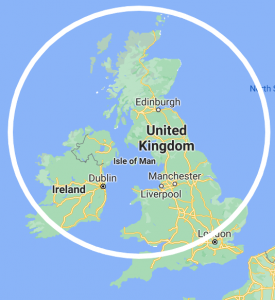
“Bu Lie Dian Zhudao” refers to the British archipelago
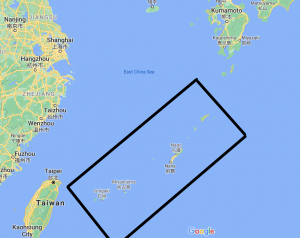
“Liuqiu Zhudao” to express the Okinawa archipelago
That is to say, in these cases, “zhudao” 诸岛 refers to a group, a chain, or a cluster of islands. [5]
Chinese playing with words
The Chinese diplomatic note sent to Malaysia in 2019 is available in Chinese and English, but China referred to the South China Sea’s geographic features in two different ways. In the Chinese version, China used the term “Nanhai Zhudao” 「南海诸岛」with the meaning of “South China Sea’s Archipelago” or “A group of the island on the South China Sea”.
中国对南海诸岛,包括东沙群岛,西沙群岛,中沙群岛和南沙群岛拥有主权;中国南海诸岛拥有内水,领海和毗连区;中国南海诸岛拥有专属经济区和大陆架;中国在南海拥有历史性权利。
Nevertheless, in the English version, China did not translate this concept into English as “archipelago” but used phonetic pronunciation from Chinese (“Zhudao”).
“China has sovereignty over Nanhai Zhudao, consisting of Dongsha Qundao, Xisha Qundao, Zhongsha Qundao and Nansha Qundao; China has internal waters, territorial sea and contiguous zone, based on Nanhai Zhudao; China has exclusive economic zone and continental shelf, based on Nanhai Zhudao; China has historic rights in the South China Sea.”
Why did China avoid using the English term “archipelago,” which is the equivalent of “Zhudao” in Chinese? UNCLOS defines “archipelago” as follows:
“Archipelago” means a group of islands, including parts of islands, interconnecting waters and other natural features which are so closely interrelated that such islands, waters and other natural features form an intrinsic geographical, economic and political entity, or which historically have been regarded as such. (UNCLOS, Article 46)
The “islands” in the South China Sea are not an “archipelago.” The Paracel is 600 nautical miles from the Spratly. The so-called “Zhongsha island” is 200 nautical miles from Paracel and 550 nautical miles from the Spratly. Even Scarborough Shoal, which China claims to belong to the so-called “Zhongsha island,” is 160 nautical miles away from “Zhongsha island.” The “Dongsha island” is 500 nautical miles from the Paracel and “Zhongsha island,” over 1,000 nautical miles from the Spratly.
Furthermore, they have never formed “an intrinsic geographical, economic and political entity.” Their distant locations and social characteristics in the South China Sea make it impossible to call them “archipelago” in English and “Zhudao” in Chinese. To give the impression that they belong to a single unit, in the English version of the note protesting Malaysia, China avoided using the UNCLOS’ term “archipelago” but spoke of them by using the phonetic pronunciation from Chinese “Nanhai Zhudao.”
Notes
[1] In this article, Bill Gertz gave false information: in July (2017), China pressured Vietnam into halting natural gas drilling in the Paracels. Vietnam does not explore oil and gas in Paracels. Vietnam does not explore oil and gas in Paracels. In 2017, China threatened to attack Vietnam’s bases in the Spratlys if Vietnam did not stop the oil and gas exploration project in the Vanguard Bank (Vietnamese: Tu Chinh Basin) with Spain’s Repsol company. This area is in the southern part of the South China Sea, on the extended continental shelf based on Vietnam’s southwest coastal baseline. As a result, Vietnam canceled the contract and compensated Repsol for losses.
[2] Peking Review 1, no. 28 (September 9, 1958): 21
[3] China stated that “Huangyan Island” (Scarborough Shoal) is under Sansha City’s management during a press conference at the Ministry of Foreign Affairs. In Chinese origin: 在今日的外交部例行记者会上,有记者问: “三沙市有关负责人称拟在黄岩岛建设环境监察站,你能否证实?菲律宾方面已正式致函要求中方就此作出澄清。中方对此有何回应” [At today’s regular press conference of the Ministry of Foreign Affairs, a reporter asked: “The relevant person in charge of Sansha City said that they are planning to build an environmental monitoring station on Huangyan Island. Can the Ministry of Foreign Affairs confirm this? The Philippines has sent a formal letter to the Chinese side to clarify this. Is there any response?”]. (See: 外交部:涉及黄岩岛建环境监测站的有关报道有误 [Ministry of Foreign Affairs: The report concerning the construction of an environmental monitoring station on Huangyan Island is incorrect]). And then the spokesperson of China’s Ministry of Foreign Affairs confirmed the information in the reporter’s question. Here, China mentions the “Huangyan Island” (Scarborough Shoal) as a part of Sansha City.)
[4] However, “zhu” 诸 also refers to each individual of the total, which is equal to “each.” This ambiguity of the pronoun “zhu” 诸 makes the phrase “zhu dao” 诸岛 on one hand expresses “distinct geographical features across the same ocean”, or in another hand, represent an “archipelago”. In many cases, “zhū dǎo” 诸岛 (islands) only denotes “island” in the plural form. Some official texts before 2016 used the phrase “Nanhai zhū dǎo” 南海诸岛 but this phrase is only a general name denoting geographical entities in the South China Sea, in which they are divided into four distinct groups. In 1947, the government of the Republic of China (ROC, 1912 – 1949) published the text “Nánhǎi zhū dǎo xīnjiù míngchēng duìzhào biǎo” 南海诸岛新旧名称对照表 (“A comparison table of the old and new names of the South China Sea Islands) using the expression 南海诸岛 (Nanhai Zhudao) but here “zhū dǎo” only means “islands” with pronoun “zhu” 诸 denotes the plural of “island.” In 1935, in the text “Zhōngguó Nánhǎi gè dǎo yǔ huá yīngmíng duìzhào biǎo” 《中国南海各岛屿华英名对照表》 (“Comparison of Chinese and English names of islands in the South China Sea”), the ROC uses the expression “gè dǎo” 各岛 (islands). In this 1935 text, “gè” 各 and “zhu” 诸 are pronouns denoting the plural of “island.” Namely, “zhū dǎo” 诸岛or “gè dǎo” 各岛 only denotes “island” in the plural form. (See: 1947年《南海诸岛新旧名称对照表》由来介绍 [An introduction to the origin of the text “Comparison table of the old and new names of the South China Sea islands” in 1947]). In 1983, China’s Geographical Names Committee 中国地名委员会 published the text “Standard Names of islands in the South China Sea” 《南海诸岛部分标准地名》 which uses the phrase “Nanhai zhu dao” 南海 诸岛. In this text, islands in the South China Sea are not represented as a single unit, but as distinct geographical features, and “zhū dǎo” 诸岛 only represents islands in the South China Sea in plural form, not means “archipelago”. In these cases, “Nanhai zhu dao” 南海诸岛 is therefore only a general name denoting geographical entities in the South China Sea, in which they are divided into four distinct groups, not to represent the meaning of “archipelago” that is defined in the UNCLOS.
[5] Besides, China uses the term Qundao to denote a group or chain of islands clustered together. “China has sovereignty over Nanhai Zhudao, consisting of Dongsha Qundao, Xisha Qundao, Zhongsha Qundao, and Nansha Qundao” (China’s note protesting Malaysia in December 2019).
Related article:
China’s Recent Invention of “Nanhai Zhudao” in the South China Sea (Part 1: The birth of “Nanhai Zhudao”, Part 2: Examining the “Nanhai Zhudao” legal basis)

 Politics & Economy3 years ago
Politics & Economy3 years ago
 Society & Culture4 years ago
Society & Culture4 years ago
 ARCHIVES4 years ago
ARCHIVES4 years ago
 Politics & Economy3 years ago
Politics & Economy3 years ago
 Politics & Economy4 years ago
Politics & Economy4 years ago
 Politics & Economy3 years ago
Politics & Economy3 years ago
 Politics & Economy4 years ago
Politics & Economy4 years ago
 ARCHIVES3 years ago
ARCHIVES3 years ago
